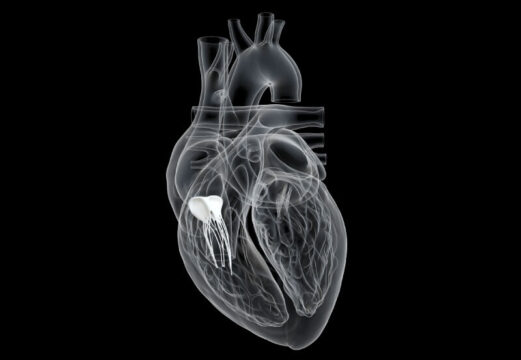Tricuspid regurgitation has become increasingly common, and current pharmacological treatment options are limited. In turn, surgery, which is a complex alternative, carries considerable rates of complications and mortality. In response to this issue, various percutaneous systems are being developed, such as edge-to-edge treatment, percutaneous annuloplasty, and caval valve implantation (CAVI), among others. In the analysis…
Health Status Scores after Transcatheter Repair in Patients with Tricuspid Regurgitation: TRILUMINATE Analysis
Severe tricuspid regurgitation (TR) has been associated with higher mortality and significant limitations to patient quality of life, with considerable rates of hospitalization for cardiac failure (CF). Transcatheter edge-to-edge repair (TEER) with TriClip has been shown effective to reduce symptoms, with low risk of periprocedural complications. The aim of this study was to assess functional…
Carotid Stenosis and TAVR
Aortic Stenosis affects over 5% of the population over 65. Even though TAVR has advanced in the treatment of this disease, many patients present carotid aortic stenosis (CAS), which involves additional surgical risk. This risk has not been thoroughly assessed in the context of TAVR. A meta-analysis was carried out including 5 observational studies with…
ACURATE Neo2: One-Year Hemodynamic and Clinical Benefit Results
Both Acurate Neo2 and its predecessor, Acurate Neo, have proven their safety and efficacy in the percutaneous treatment of severe aortic stenosis. The Acurate platform offers a lower gradient and a larger effective orifice area, as well as a low risk of periprocedural complications, according to previous registries. However, the first-generation Acurate device had some…
TAVR: High Implantation of Self-Expanding Valves Directly Impacts ECG
TAVR has been shown beneficial, especially in high risk or inoperable patients. However, there are limitations to its use, especially with self-expanding valves, which are the need for pacemaker implantation and ECG changes after procedure. To address this matter, researchers assessed the right and left cusp overlap effect on 254 patients undergoing TAVR with self-expanding…
Tricuspid Regurgitation: Natural Progression and Prognosis
The prevalence of tricuspid regurgitation (TR) is significant; its prognosis is well known, and severe TR stages are associated with higher mortality and hospitalization for cardiac failure (CF). Seeing as valve disease tends to evolve over time, in advanced stages, we usually check on patients at specified intervals for early identification of potential hemodynamic complications…
MYVAL, a TAVR Balloon-Expandable Valve with Promising Results
TAVR has been shown beneficial over time, and with the development of new generation of prosthetic valves and implantation techniques, outcomes have been improved, reducing the incidence of leaks y and the need for definite pacemaker. This study looked at the evolution of 100 patients with symptomatic aortic stenosis treated with Myval THV from Meril…
EVOQUE: Transcatheter Tricuspid Valve Replacement, One-Year Outcomes
Treating tricuspid regurgitation (TR) has gained increasing importance in interventionism. There is abundant literature on the negative natural evolution of this condition and its unfavorable prognosis, as well as the clinical challenges associated to optimal medical treatment. Among its percutaneous treatment options, both edge-to-edge repair devices (TEER), as showed in TriValve and TRILUMINATE trials, and…
New Advances in Mitral Regurgitation Devices with Promising Results
Mitral regurgitation (MR) is a frequent valvulopathy and when the optimal medical treatment at maximum tolerated doses is not enough, surgery is the first course of action. And even though edge-to-edge repair with clips has seen substantial improvement, it is currently reserved for those at high risk of surgery. However, there is an increasing number…
SAFE-TAVI Study: Safety and Efficacy of the Pressure Sensor and Pacing Guidewire
Currently, we observe an increase in the number of transcatheter aortic valve replacement (TAVR) procedures due to its expansion toward a younger population with lower risk. For this reason, it is crucial to maintain continuous technological innovation to minimize post-procedural complications. The FDA has approved the SavyWire, a preformed 0.035-caliber guidewire that offers three essential…
Can Ultrasound Treat Aortic Stenosis?
Severe calcified aortic stenosis is a common condition that can currently be effectively treated with SAVR or TAVR. However, some patients, given comorbidities or anatomical characteristics, are not good candidates for these therapeutic alternatives. The non-invasive ultrasound therapy (NIUT) has surged as viable alternative. It claims ultrasound might act on calcified valves, and mobilize tissue…









